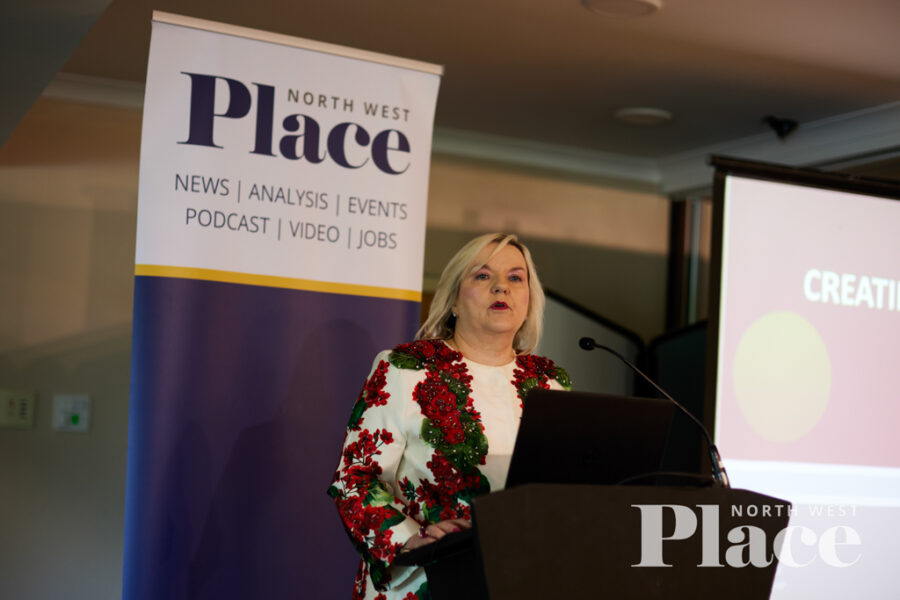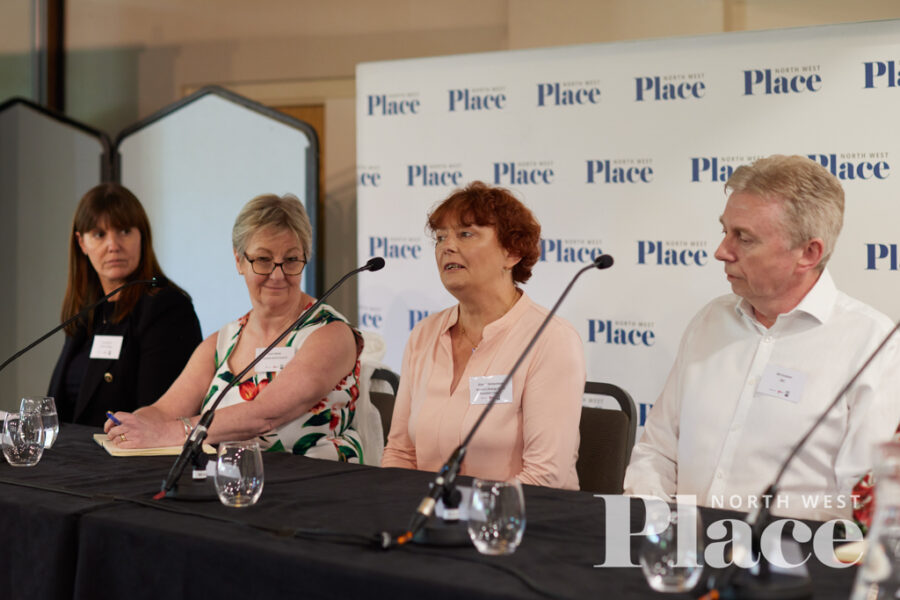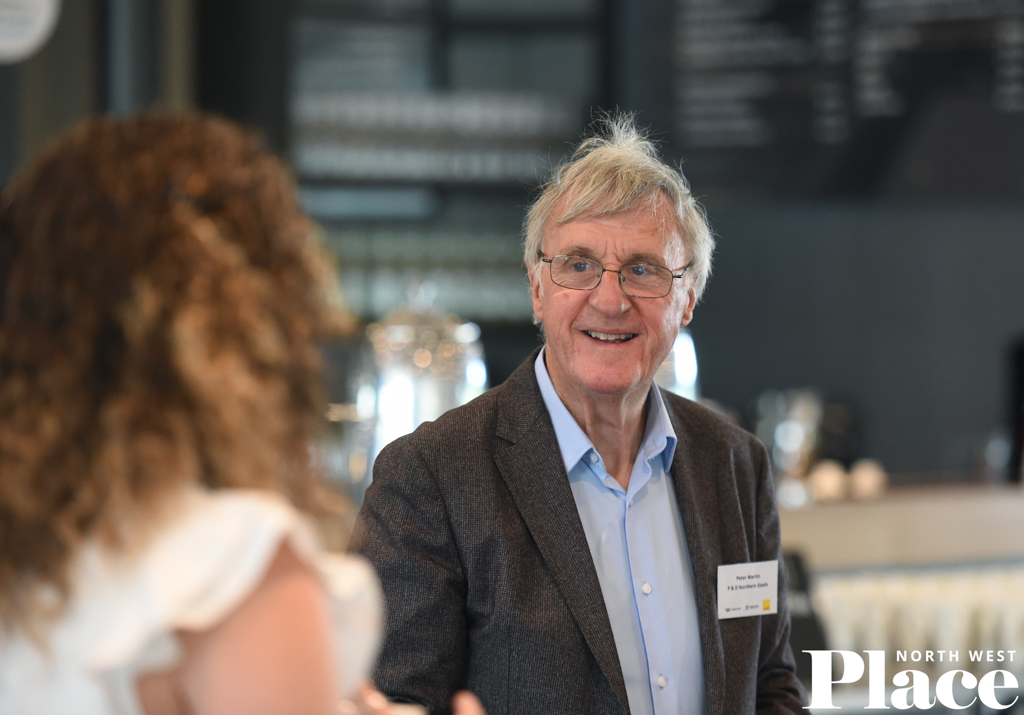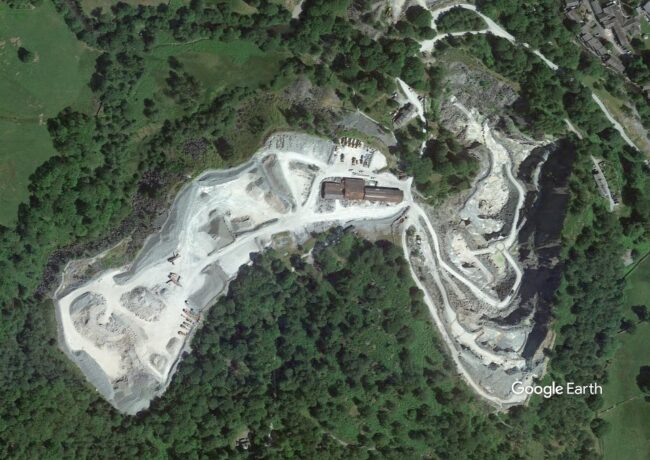Event Summary
Cumbria Development Update | Photos, slides, and summary
“At a pivotal moment” is how Place North West editor Julia Hatmaker summed up the county’s development scene at the 2023 Cumbria Development Update on 15 June. The event, at the Castle Green Hotel in Kendal, was the first since the county split into two unitary authorities on 1 April.
The sponsors were Genesis Homes, WeFibre, and Waterman Group.
The state of the market
The pandemic led to extremely good residential sales in 2021, said Rachel Bagshaw, head of land agency South Lakes at H&H Land & Estates, in the first presentation, with 2022 seeing a lack of supply which led to prices increasing. More recently, the Mini-Budget of 2022 caused huge market uncertainty, while the cost of living and rising interest rates meant the market died down. “Since January we have seen that stabilise,” she added.
“Seller expectations are still quite high and we are seeing overinflated guide prices being put on properties by some agents which is a reflection of lack of volume,” Bagshaw said.
She said she’d seen a significant increase in rents in the last year as there were not enough properties available – something she predicted would become more widespread as landlords sold up to avoid changing legislation and interest rates.
The land market is strong, including smallholdings as “people seek a bit of the good life”, while reductions in farm subsidies mean owners are revaluating their businesses. Agricultural land prices remain steady, while development land sales are seeing strong interest, particularly on larger sites.

From left: H&H Land & Estates’ Rachel Bagshaw, Cumbria Tourism’s Dan Visser, Westmorland and Furness Council’s Angela Jones, and Genesis Homes’ Nicky Gordon. Credit: PNW
Planning problems
Delayed planning was a consistent theme throughout the first panel discussion. Bagshaw said these delays couldn’t be helped in the short term by the transition to two unitaries. She also said new rules around biodiversity net gain and nutrient neutrality were having an impact, particularly on the number of new homes being granted planning permission.
Angela Jones, director of thriving places at Westmorland and Furness Council, said the new authorities had an “absolute commitment to replacing the layers of bureaucracy”. She did highlight skills shortages, particularly around planning, and said using agency contractors was not a long-term solution.
Nicky Gordon, chief executive of Genesis Homes, added: “I’m looking for an element of accountability to come from the councils. When you make applications and have a specific business plan as to when planning will be achieved, accessibility and communication really have to come in to play.”
Jones responded: “We are committed to that collaboration. Hopefully new leadership, new start. Contact me, contact my team.”
Gordon also asked how to engage councillors in a pro-development way. Jones said briefings were underway and officer delegation was used as much as possible: “We have an ambition for inclusive growth and want to be an enabler, not a blocker.”
Workforce woes
Dan Visser, chair of Cumbria Tourism, said the group was starting a new destination management plan to carry forward for the next five to 10 years. Discussing current problems for his industry, he said: “Labour supply is the biggest challenge. We have significant housing issues and a significant lack of appropriate public transport.
“Where we do have pockets of labour, moving that labour to where there is work is being carried out by the private sector. Six or seven 50-seater coaches a day go from the west coast to the Lake District to move labour around and that comes at a huge cost. That’s stifling profit and development.”
Jones said that the working age population was declining in the county and talent was still being lost to other parts of the country. She added: “Transport connectivity and housing are absolutely top of our agenda.”
Hatmaker highlighted that less than 500,000 people live in Cumbria, while the city of Manchester has 50,000 more people and is 1% of the county’s size. She asked what can be done to attract more people.
Gordon said the county has the landscape and also sectors like advanced engineering, nuclear, as well as housing and new build: “Brand Cumbria has to be much stronger.”
Jones added thriving town centres, good education and the right sort of housing mix to the attraction wishlist and said: “Planning is critical to this, but it’s one part of a jigsaw.”
Barrow & BAE
Much was discussed about the prospects for Barrow following news of BAE’s new submarine contracts.
Jones told the room: “BAE are looking to grow their workforce by 50% and they recognise that is going to soak up a lot of our workforce. How do we address that? It’s about growing our own and that all comes back to young people. You can hold us to account but we all have a part to play.”
Bagshaw added: “It’s getting people in there and getting them to stay and invest their money there.”
Second homes
Referencing a new government registration scheme for holiday accommodation, Visser said it would be a valuable tool in identifying areas of imbalance where holiday lets outweigh residential properties. But he said there were two problems – it’s not retrospective so only adds those with new planning consents, and it doesn’t include second homes.
“We have a big challenge where we have dwellings that stand empty for most of the year,” he said.
Jones added: “Cumberland, Westmorland and Furness, the LEP and Cumbria Tourism are all aligned in our response. It’s about balance and new legislation will go some way to address that.”
Backing the brand
The first panel was all on the same page about the importance of ‘Brand Cumbria’.
Bagshaw said: “The environment is a massive asset but the promotion of the county is that we do have job opportunities, we do have exciting careers, to draw people in.”
Gordon said: “I urge you to revolutionise the message about what is available in Cumbria. When you take the most advanced engineering in the world in Barrow, Sellafield decommissioning and the major message for a new reactor, the tourism industry dominating in the centre and the service all around it, it’s there. It just needs delivery.”

Cumbria LEP’s Jo Lappin spoke about the county’s future ambitions and how it is going to achieve them. Credit: PNW
Attracting investment
Capitalising on Cumbria’s potential was a theme in the second presentation, which was from Cumbria LEP chief executive Jo Lappin.
“We are very focused on building our competitive advantages,” said Lappin . “We need to push with the grain of policy. We’ve worked seriously on developing credible investable propositions. We want to get investment sources. The public purse is super constrained so how do we work with private businesses to lever their investments?”
She described the LEP’s three strategic touchstones: improving productivity, delivering inclusive growth, and net zero energy generation and decarbonisation.
Britain’s Energy Coast
Lappin also spoke strongly about Cumbria’s clean energy potential and her hope that the county would regain its title as host of the world’s largest offshore windfarm – lost to the east coast a couple of years ago.
“Cumbria has way less than 1% of the population of the UK, yet we create almost 6% of the UK’s clean energy which is punching way above our weight.”
She highlighted all Cumbria’s clean energy sources – on-and-off-shore wind farms, solar, biomass, and anaerobic – but warned there was no point in leading the way on this without also tackling business decarbonisation.

From left: Spirit Energy’s Jill Glennie, Cumberland Council’s Jane Meek, Britain’s Energy Coast Business Cluster’s Dianne Richardson, BEC’s Bill Graham, and Cumbria LEP’s Jo Lappin. Credit: PNW
New ambition
Transitioning to the second panel discussion, Lappin identified five locations – Carlisle Energy Hub, Workington, Moorside and Sellafield, Barrow Green Energy Hub and Cumbria Rural Testbed – to work with businesses and move forward Cumbria’s energy coast offer.
Bill Graham, head of estates at BEC, said: “It is very clear that historically the focus was on nuclear, but it’s wider than that.”
Dianne Richardson, chief executive of Britain’s Energy Coast Business Cluster, agreed and added: “A lot of talk about Sellafield is decommissioning but there is a big opportunity to use it as a catalyst and really deliver as Britain’s Energy Coast.”
Emphasising the UK’s reliance on overseas energy and expressing concern about the detail of the government’s energy security strategy, Lappin said: “The bit that’s missing is nuclear. We’ve waited a long time for a finance vehicle which will allow nuclear to proceed.”
Richardson agreed and said: “We need the government to concentrate. We’ve got members who are in the new nuclear arena and can deliver solutions across large nuclear and small reactors. An organisation, Solway Community Power Company, has proved that investors want to invest. All they need to see is that government wants this to go ahead.
“The problem we have is that the land available for this to happen is under government control through the NDA. We can make it happen – here, in our community. We are too reliant on the public purse. Let’s start getting some private investment in.”
Net zero
Spirit Energy is predominately a gas business but is now pushing towards net zero. Its Morecambe Net Zero (MNZ) Cluster has the potential to become one of the UK’s largest carbon storage hubs with the capacity to store up to a gigatonne of carbon dioxide, equivalent to three years’ worth of current UK carbon dioxide emissions.
Jill Glennie, the company’s head of communications, said: “We are blessed with natural beauty and geography but also geology as well. Local support has been amazing, but we also need the government to support our ambitions.”
Coal v clean energy
The approval for a new coal mine had to be discussed. Richardson said there had been a very polarised debate around jobs versus the environment but that the messages were more nuanced, like how the need for steel for schemes such as windfarms could currently happen without coking coal: “That’s an interesting problem to have.”

BECBC’s Dianne Richardson argued that the conversation around the new coal mine needed to be more nuanced. Credit: PNW
Taking the train
Jane Meek, assistant director of thriving place and investment at Cumberland Council, detailed how the strong push for Carlisle Station to form a better gateway to the region ongoing – and she wants to capitalise on HS2 as a location where longer trains could split. She added: “We continue to have that ambition. We need to show government what we have to offer. Good infrastructure is so important if we are going to increase our productivity.”
Developing partnerships
Graham used the Bus Station in Whitehaven as an example of great collaboration between public and private sector in the county. He said: “It was a derelict, dilapidated gateway. The stakeholders have transformed the whole area.
“The skillset here is second to none. There is a lot of social value. That creates massive opportunities, like hotels getting people from the Lake District to the west coast riviera.”
Glennie described her company’s partnerships with schools and colleges, as well as employers like BAE: “We all want great people and great skills.”
Going for growth
Meek said: “We identified years ago that there was a need to increase the number of people of working age to support the businesses we’ve got. We set a very strong strategy and that meant getting our local plan right. We delivered it within five years and that included St Cuthbert’s Garden Village. That now has got strength and we now have the funding for the new southern relief road, as well as delivering 10,000 new homes and that isn’t about being a suburban extension of Carlisle, it’s about providing somewhere people want to live.”
Slides
Rachel Bagshaw, H&H Land & Estates
What’s next?
Place North West has assembled two panels of experts to delve into best practices for new-build schemes and larger retrofit projects at our Sustainability in Practice event on 6 July. Book your tickets.
Click on any image to launch gallery



































